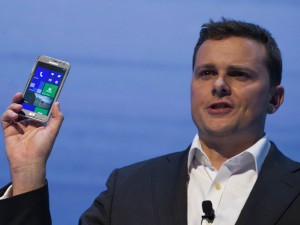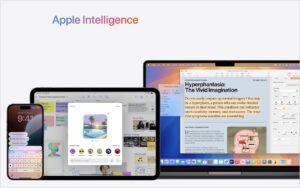 Not quite a week after the Apple v. Samsung trial concluded in Apple’s favour, Samsung introduced on Wednesday the Ativ S — the world’s first Windows 8 Phone device — leaving many in the technology punditocracy wondering how Microsoft will exploit the uncertainty in the aftermath of the trial.
Not quite a week after the Apple v. Samsung trial concluded in Apple’s favour, Samsung introduced on Wednesday the Ativ S — the world’s first Windows 8 Phone device — leaving many in the technology punditocracy wondering how Microsoft will exploit the uncertainty in the aftermath of the trial.
In a post Apple v. Samsung world, the uncertainty for Samsung begins with some peculiarities in the trial itself. Writing at Techpinions, Patrick Moorhead has an excellent analysis of some peculiarities of the trial — particularly the lack of originality of Apple’s “Aligned Grid” and “Pinch and Zoom” patents. Mr. Moorhead points out that both of these features had their genesis in Microsoft products: Windows had an aligned grid circa Windows 95 and the Bush-era Surface pioneered “Pinch and Zoom” sometime in 2006/2007.
Mr. Moorhead also takes on one of Apple’s claims that became quite infamous during the trial — the rectangle with curves claim. Like “Aligned Grid” and “Pinch and Zoom”, this form factor was not entirely unique to Apple: the Compaq T1100 sold in 2003 featured these very same curves.
While Mr. Moorhead’s post-mortem analysis in interesting, it is likely something that Apple already knew and considered when trying to craft a legal strategy. The question is, did Apple feel like their profit margin was being legitimately threatened by these self-aligning grids, pinch and zoom screen, and curves? Or did it see this as a way of exploiting nebulous American patent jurisprudence and a somewhat sympathetic jury into ordering the containment of Android’s growth?
Considering the argument that the motives of Apple v. Samsung were not about recouping losses from patent infringement, and about containing the growth of Android, the case could be made that Windows 8 Phone — which has licensing agreements set up with Apple — may be the safe alternative.
Earlier this year, a plethora of market research reports all said that Samsung’s Galaxy phones had stolen Apple’s smartphone hegemony. Windows Phone 8 is in no danger of doing this, as the market share of Windows Phone is in the range of 0.5-1{b81fbfd19e1fca5890798868c0714c408bbd5ec471654b6f9630c0fffa6e7eb3}. Even if Windows Phone had quarter-on-quarter exponential growth rate (logarithmic if they are lucky), it would come nowhere close to Samsung’s 30.6{b81fbfd19e1fca5890798868c0714c408bbd5ec471654b6f9630c0fffa6e7eb3} market share in Q1 of this year.
Though it may be a longshot, one conspiratorial sounding rationale is Apple and Microsoft have come to some sort of faustian bargain during patent negotiations that would give Microsoft a lawsuit-free road to growth in the smartphone sector; protracted patent warfare contains Samsung’s Android phones giving Samsung’s Microsoft Phone’s room to grow. While it is loathsome to bring up Gramsci, this bears something of a resemblance of the creation of a ‘false consciousness’.
Will Microsoft’s Windows Phone grow in the wake of Apple v. Samsung? Only time will tell.


